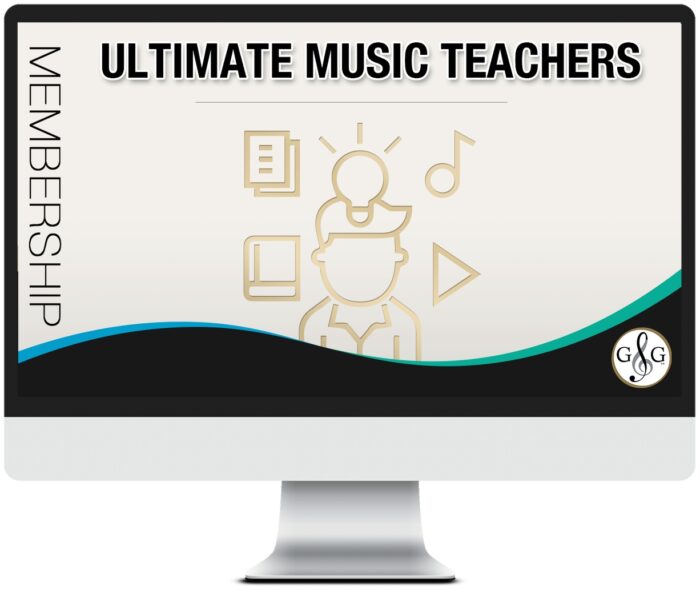Articulation #3 – Staccatissimo
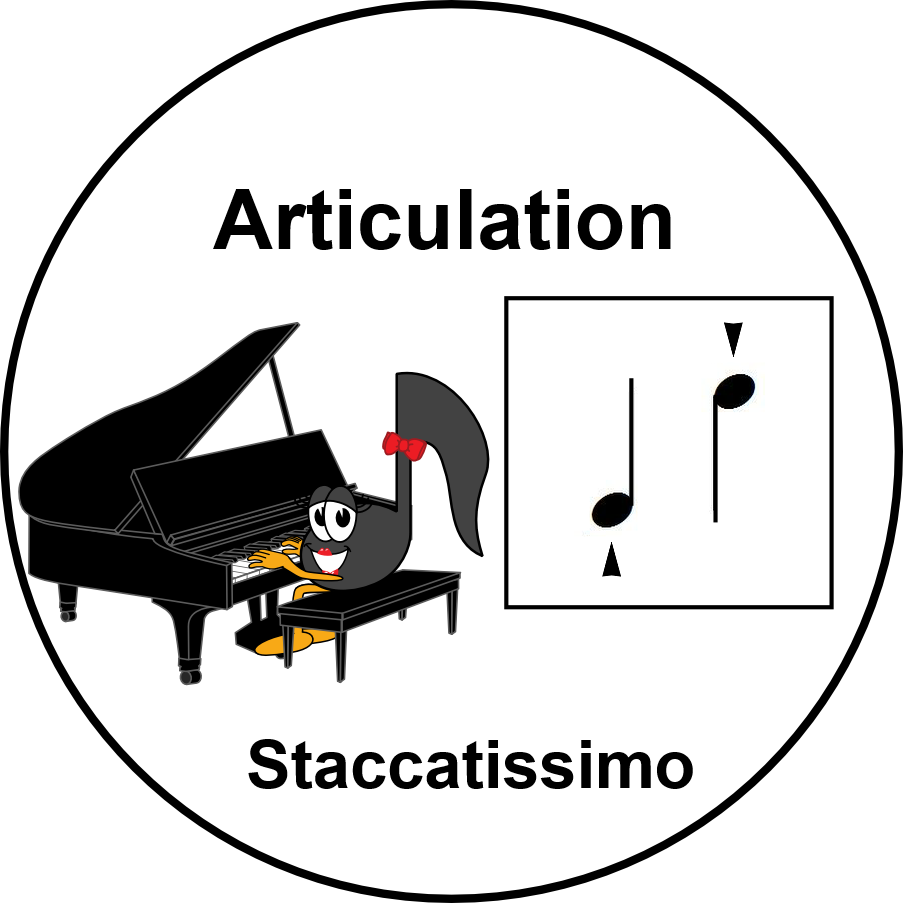
Articulation Signs tell us how to play a note. The Essential Dictionary of Music defines Articulation as "the manner in which notes are performed, such as staccato or legato".
In our Articulation Series, we have explored:
In this blog, we will look at Staccatissimo.
The ending "issimo" means "very". (piano - Soft, pianissimo - Very Soft; presto - Very Fast, prestissimo - Very Very Fast.).
Staccato - separated, detached; Staccatissimo - very separated, very detached. Makes sense, doesn't it!
The Norton Manual of Music Notation defines a Staccatissimo as "an articulation even more heavily accented than staccato".
The online Dolmetsch Music Dictionary (Dolmetsch.com) defines Staccatissimo as "an extreme form of staccato".
Let's explore the Staccatissimo - What is it? What does it look like? How do we write it? Are their placement rules?
Articulation - Staccatissimo
Dolmetsch.com states that Staccatissimo indicates that the notes are to be played extremely separated and distinct (a superlative staccato). It is marked with a "wedge" or a "little pike" over or under the notes, depending on stem direction. It indicates that one should shorten the note thus marked to one quarter of its written length, the remaining three-quarters replaced with silence.
Wikiwand.com states that a Staccatissimo is also known as a Spiccato, and is usually applied to quarter notes or shorter.
This website states that "In the past, this marking's meaning was more ambiguous: it sometimes was used interchangeably with staccato, and sometimes indicated an accent and not staccato. These usages are now almost defunct, but still appear in some scores. In string instruments this indicates a bowing technique in which the bow bounces lightly upon the string."
All websites and resources that I accessed were all in agreement - the articulation "Staccatissimo" is shorter than a staccato ("very" staccato).
Articulation - Staccatissimo - How to Draw the Wedge
The Staccatissimo Wedge looks like a small black triangle!
So, how big or small is this wedge?
I tell my Students that I do not take out a magnifying glass and measuring tape to examine the Staccatissimo Wedge. However, I do "eyeball" it.
If the Staccatissimo Wedge is bigger than the notehead, it is too big.
If the Staccatissimo Wedge is so small that it looks like a little pin prick, then it is too small.
A "just right" Staccatissimo Wedge should fit inside the space between two staff lines.
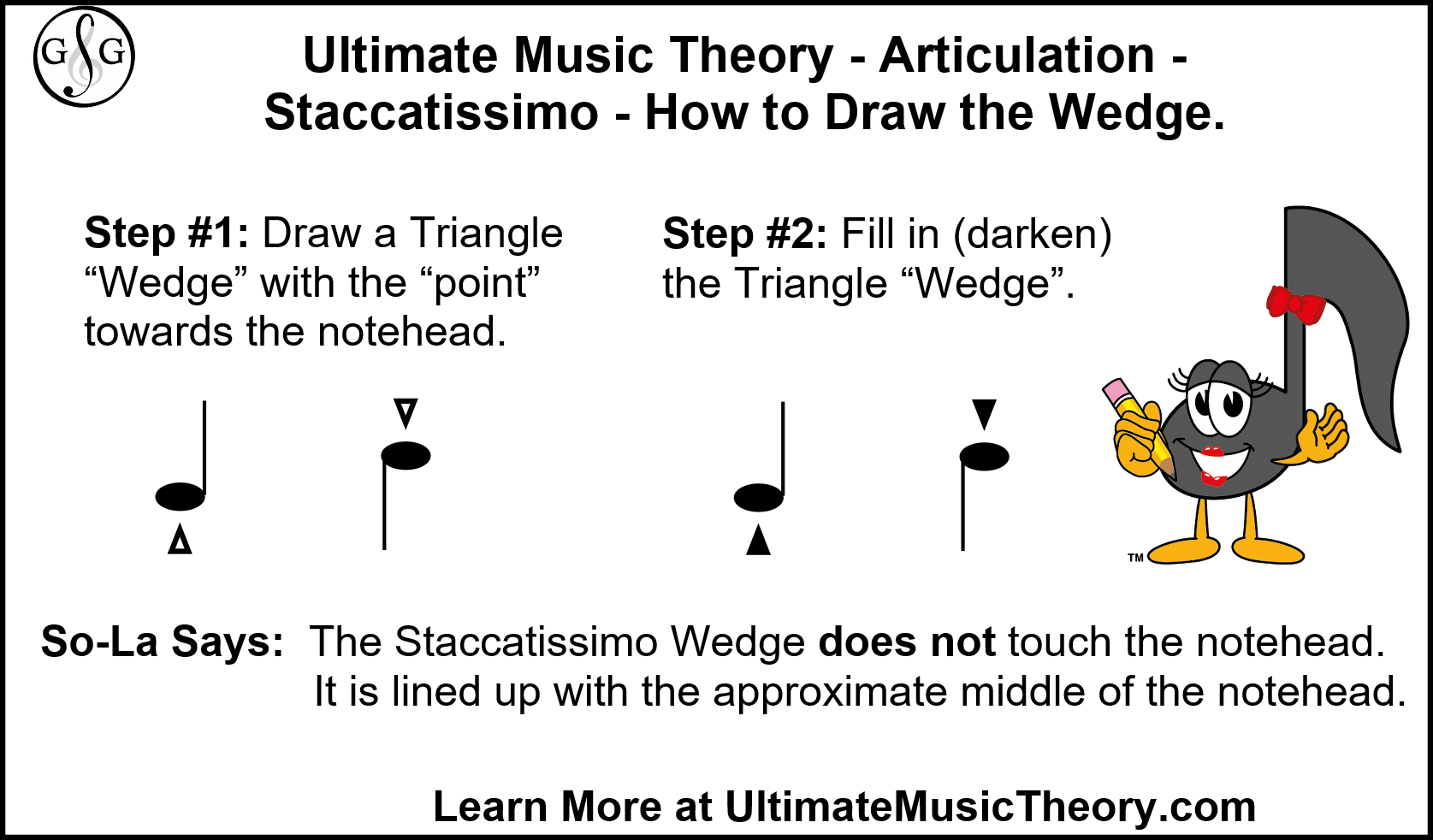
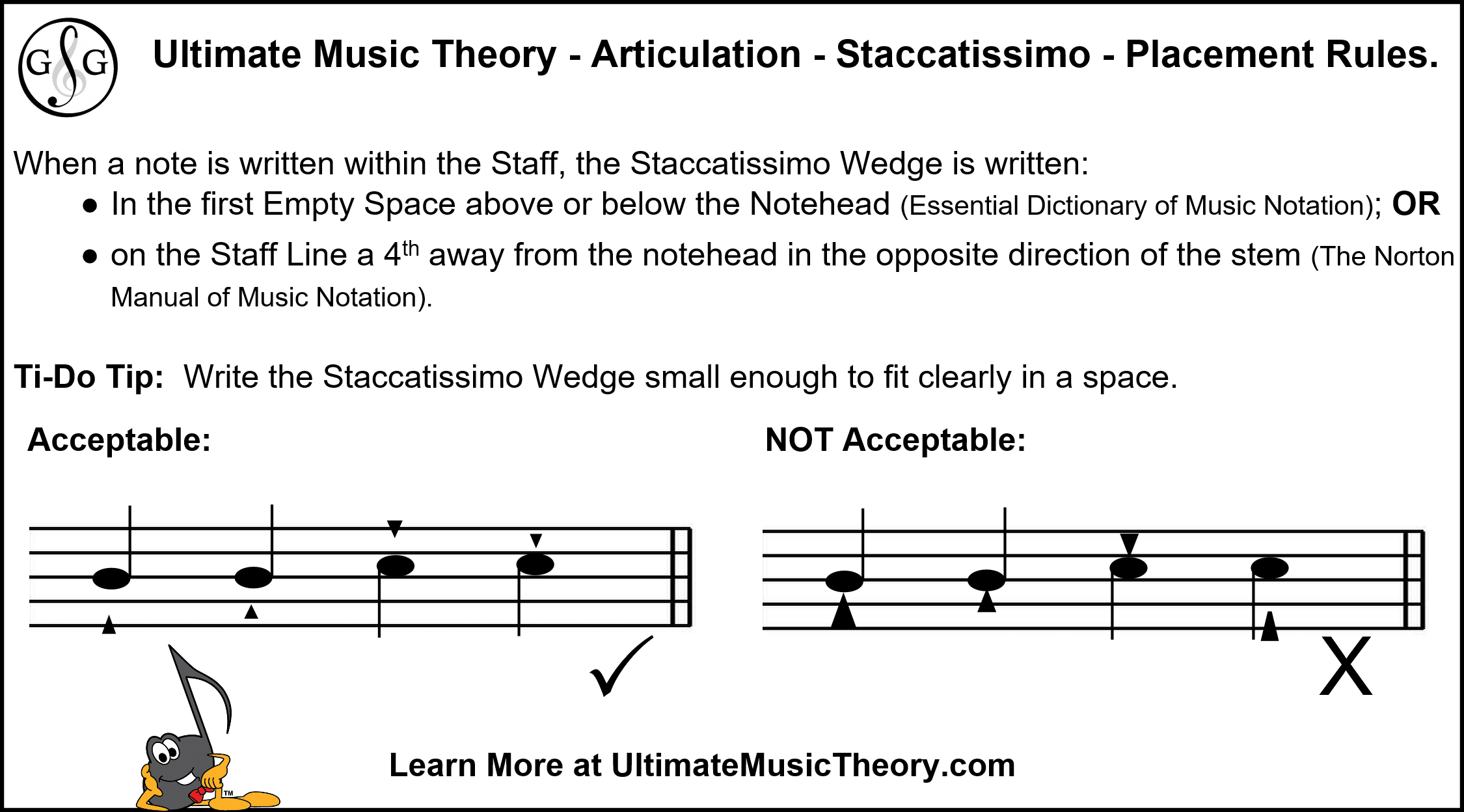
I spent hours trying to find "the definitive rule" for the placement of the Staccatissimo Wedge. I thought that it was written just like a staccato dot - in the first empty space above or below the notehead. But that is not the only Placement Rule.
The Norton Manual of Music Notation states that, "when written within the staff, it should lie on a staff line a fourth away from the notehead."
The Essential Dictionary of Music Notation states "The Staccatissimo is centered on the notehead. Placement is in the next space from the notehead, whether the note is on a line or space."
However, as I pulled out every different edition that I own of advanced Mozart and Beethoven piano scores, I noticed that it was often also written simply in the space above or below the staff. This seems to be the default position for Staccatissimo Wedge placements in my Finale Music Program.
*sigh*
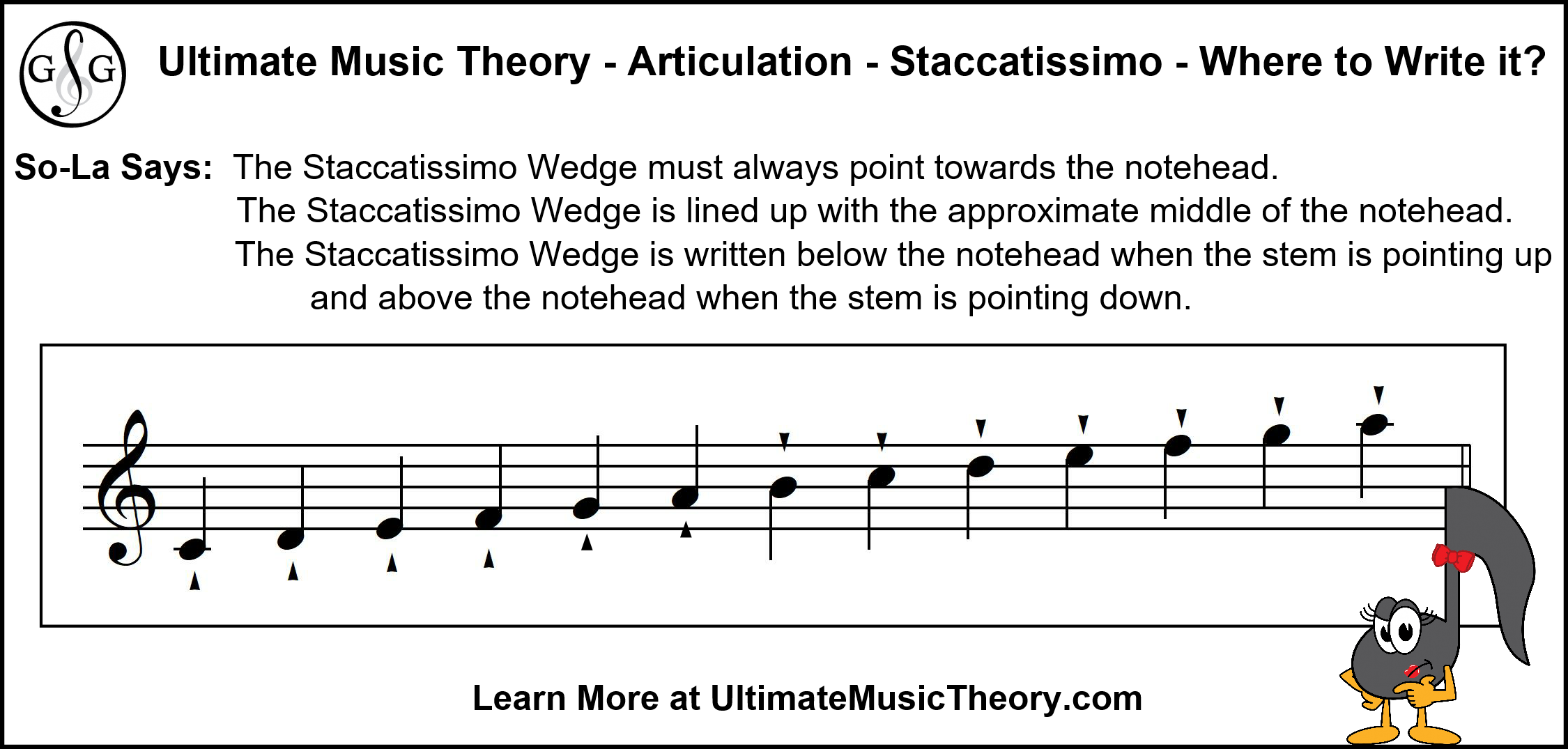
The Staccatissimo is not in the Ultimate Music Theory Workbook Series, and it is not a requirement on any RCM Theory Exam.
I added Staccatissimo to my Articulation Series though because I have a Level 10 Piano Student who was learning a piece that had a lot of these little weird triangles in it, and I needed to LEARN about them before I TAUGHT them to her!
Like I always say, "You never know what you don't know until you realize that you didn't know it".
Articulation - Staccatissimo - Writing them on your UMT Whiteboard
Right now, I want you to pull out your UMT Whiteboard! Are you ready to learn?
- Write 2 Quarter Notes on Line #3 with Stems Up.
- Write 2 Quarter Notes on Line #3 with Stems Down.
Add a Staccatissimo Wedge to each note.
- Write one on the line a 4th from the notehead.
- Write one in the first empty space above/below the notehead.
Which was easier to write?
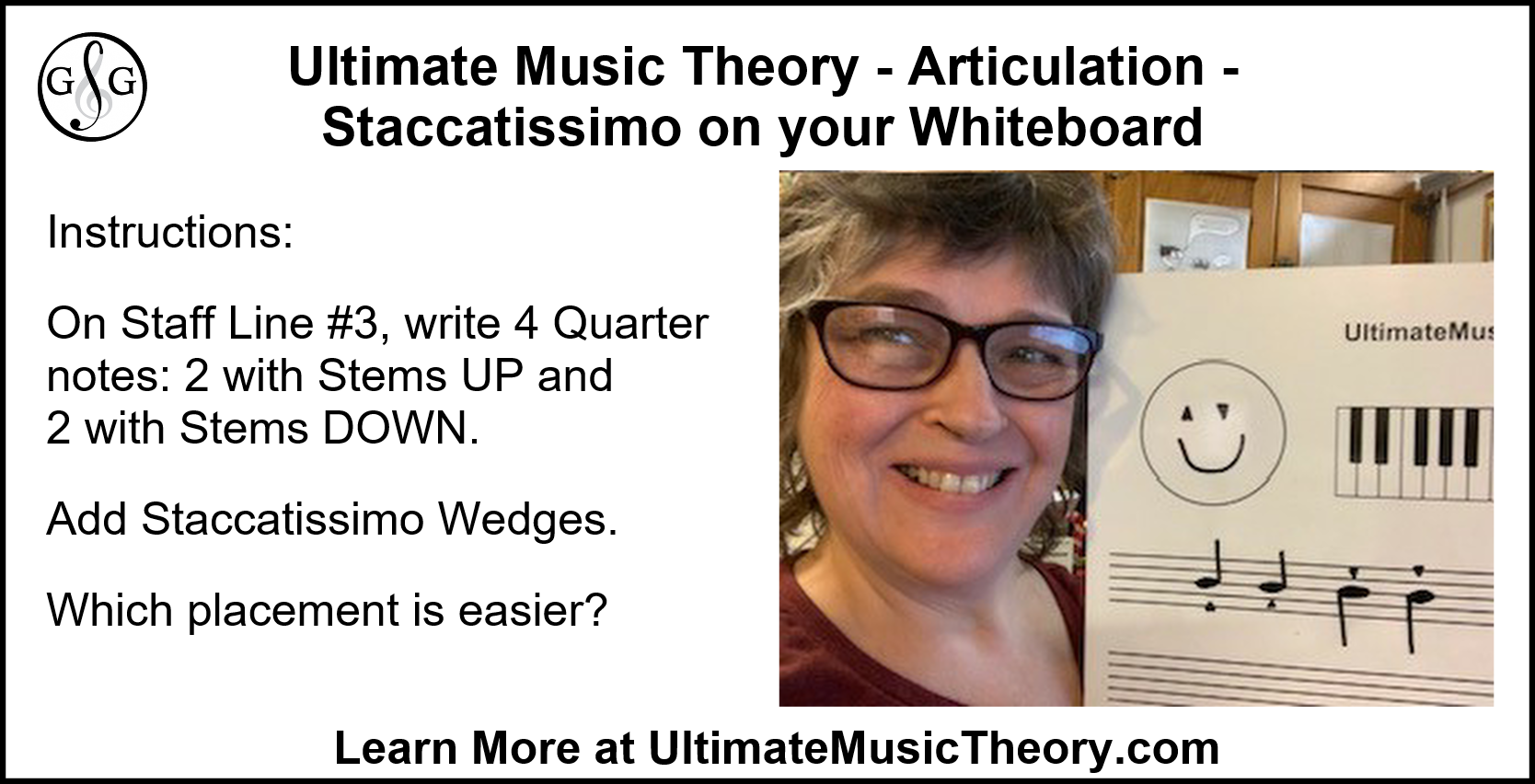
What did you discover?
I discovered that it was so much easier to write the Staccatissimo Wedge on the line a 4th above or below the notehead. For me, it was a struggle to write my Staccatissimo Wedge small enough to fit inside the space (without touching the lines).
Thank you for reading, and remember to Keep on Learning!
Ultimate Music Teachers Membership
♪ LEARN ♪ PLAN ♪ TEACH ♪ GROW
The One & ONLY Ultimate Music Teachers Membership
To Become A UMT PRO!
Your Success Path Starts Here - Go To TeachUMT.com Today!
Keep on Learning... With a Smile and a Song!
Shelagh McKibbon-U'Ren
